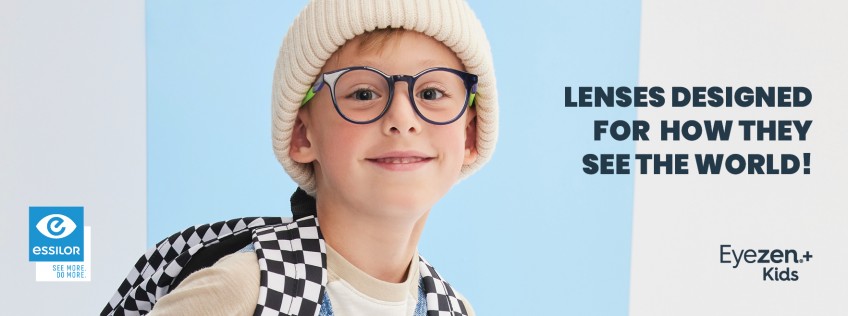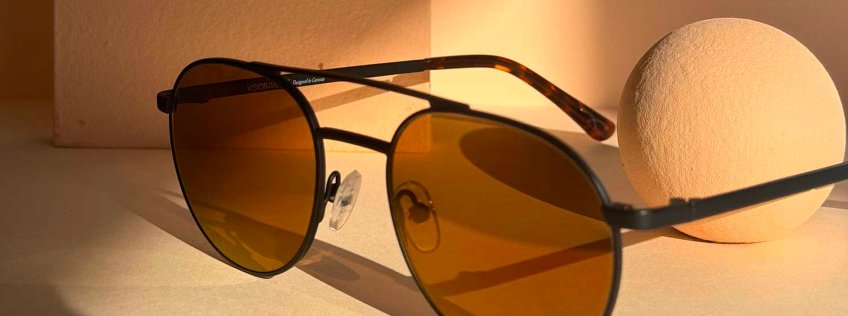
Are Your Children’s Lenses Right for Their Needs?
by Optoplus / September 2022
Learning to read, write, see the future, wonder: from the age of 6, children’s eyes play a key role in their healthy development, and the glasses they wear should adapt to their ever-changing needs. But standard lenses, designed for adults, do not meet children’s specific needs. That’s why Essilor has created Eyezen+ Kids lenses, an all-in-one solution adapted to their morphology, visual behaviour and daily activities, to provide children ages 6 to 12 with comfortable and protected vision throughout the day.
The World at Children’s Level
Driven by their insatiable curiosity, children take in their environment with countless eye movements1. Due to their small size, children will make more visual scans from bottom to top, thus using a larger surface area of their lenses. Unlike standard models, Eyezen® DualOptim Kids technology provides optimal vision over a larger lens surface area (60%), ensuring clear, sharp vision in all directions2.


The Right Focus
From chalkboards to books to the increasing number of screens; most educational material in schools is presented visually. And because children’s arms are shorter, they see objects from a closer distance and require good close-up vision. Clear and durable, Eyezen+ Kids lenses provide children with effortless vision for all their daily activities, especially those involving close-up vision.
Professional Follow-Up
Children seldom realize they have vision problems and often do not know how to protect their eyes everyday. It is therefore recommended that they have a yearly eye examination from the age of 6 to ensure that their vision care is optimal. Ask your local OPTOPLUS eyecare clinic optometrist to find out if Eyezen + Kids lenses are right for your child.
1 BJÖRN DROBE, 2011. Based on studies and measurements conducted by Essilor on the head-eye coordination of 169 children ages 6 to 14.
2Internal simulation versus a Spheric Essilor single vision lens with corrections from -6.00 D to +6.00 D (>=-4.00 D).
Share this article







